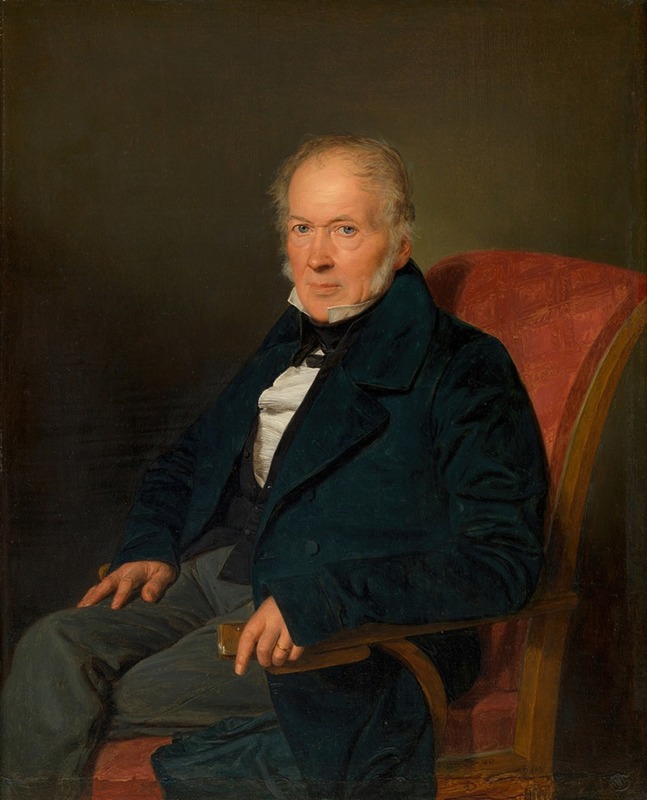
Johann Jakob Schwartz von Mohrenstern
A hand-painted replica of Ferdinand Georg Waldmüller’s masterpiece Johann Jakob Schwartz von Mohrenstern, meticulously crafted by professional artists to capture the true essence of the original. Each piece is created with museum-quality canvas and rare mineral pigments, carefully painted by experienced artists with delicate brushstrokes and rich, layered colors to perfectly recreate the texture of the original artwork. Unlike machine-printed reproductions, this hand-painted version brings the painting to life, infused with the artist’s emotions and skill in every stroke. Whether for personal collection or home decoration, it instantly elevates the artistic atmosphere of any space.
Ferdinand Georg Waldmüller was a prominent Austrian painter of the 19th century, renowned for his contributions to the Biedermeier period, a style characterized by its focus on realism and detail. One of his notable works is the portrait titled "Johann Jakob Schwartz von Mohrenstern." This painting exemplifies Waldmüller's skill in capturing the essence of his subjects with meticulous attention to detail and a keen sense of realism.
Waldmüller was born in Vienna in 1793 and became one of the leading figures in Austrian art during his lifetime. His works often depicted everyday life, landscapes, and portraits, reflecting the cultural and social milieu of his time. The Biedermeier period, during which he was most active, was marked by a shift towards more intimate and personal subjects, moving away from the grand historical and mythological themes that dominated the previous era.
The portrait of Johann Jakob Schwartz von Mohrenstern is a testament to Waldmüller's mastery in portraiture. Although specific details about the subject, Johann Jakob Schwartz von Mohrenstern, are not widely documented, the painting itself provides insight into the artist's approach and the stylistic elements of the period. Waldmüller's portraits are known for their lifelike quality, achieved through his adept use of light and shadow, as well as his ability to render textures and fabrics with remarkable precision.
In this particular work, Waldmüller employs a naturalistic style, capturing the nuances of the subject's expression and attire. The attention to detail in the depiction of clothing and accessories is characteristic of Waldmüller's work, reflecting the fashion and social status of the time. The use of light in the painting highlights the subject's features, creating a sense of depth and realism that draws the viewer into the portrait.
Waldmüller's ability to convey the personality and presence of his subjects is evident in this painting. His portraits often go beyond mere representation, offering a glimpse into the character and demeanor of the individuals he painted. This skill made him a sought-after portraitist among the Viennese bourgeoisie and aristocracy.
Throughout his career, Waldmüller faced both acclaim and criticism. While he was celebrated for his technical prowess and attention to detail, he also encountered challenges due to the changing tastes in art and the rise of new movements. Despite these challenges, his work remained influential, and he continued to produce art that resonated with the public and patrons alike.
Today, Waldmüller's paintings, including the portrait of Johann Jakob Schwartz von Mohrenstern, are appreciated for their historical significance and artistic merit. They offer a window into the cultural and social dynamics of 19th-century Austria, as well as the personal stories of the individuals he portrayed. Waldmüller's legacy endures through his contributions to the Biedermeier style and his ability to capture the essence of his time with clarity and precision.


















